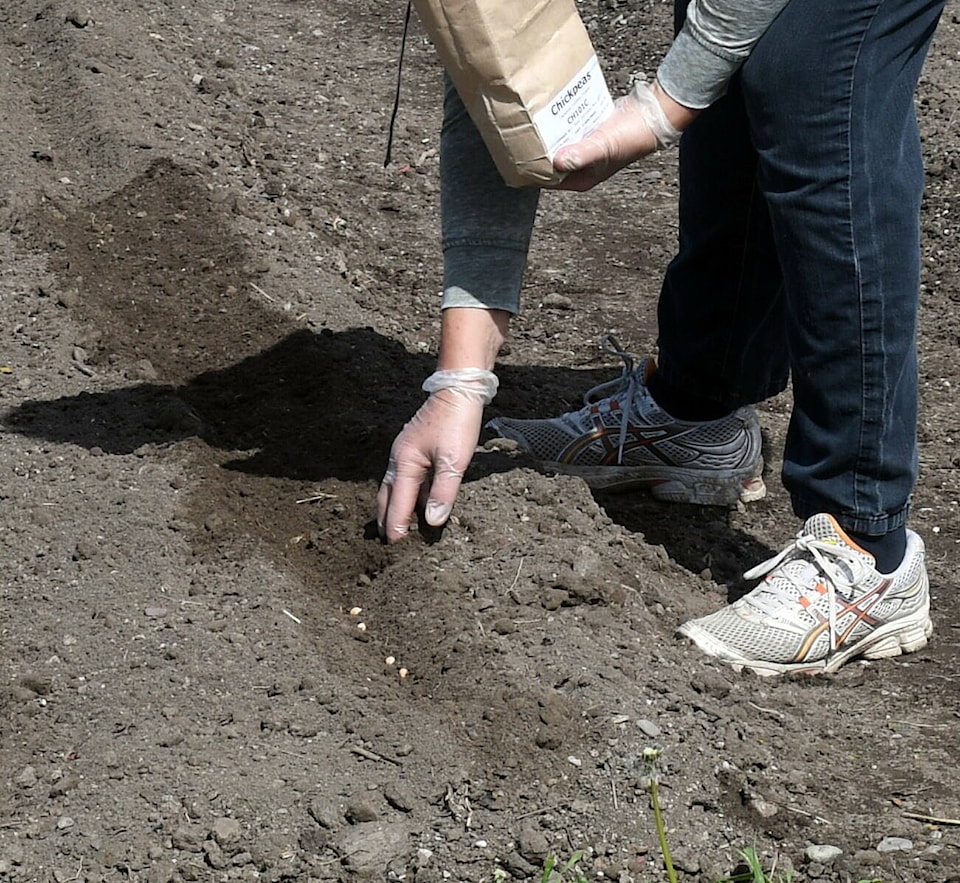By Patricia Huet, Creston Community Seed Bank Society
If you have been thinking about growing your own fresh vegetables, but don’t know where to start, don’t worry. Gardening is easy, fun, and very rewarding. Just provide the plants with good soil, sunlight, and water. In no time, you will be eating produce with amazing flavour, right out of your own garden.
READ MORE: Plants for the future: Creston Community Seed Bank Society aims to enhance food security
Preparing the garden space
It can be hard work at first to get a plot dug and weeded. Make sure to do it when the ground has dried out a little, not bone dry, but not soggy either. Rake your new garden plot to level it and remove lumps of clay and rocks. Then add manure or compost and mix it in. Or instead, you could build raised beds and add new soil.
Now that you have a blank canvas. Figure out how you want to arrange the plots or raised beds in your garden. The plants get the most sun if the rows are oriented from north-south, rather than east-west. Make sure you can reach the vegetables (and weeds) from both sides of each bed.
Cool-season vegetables
Grow only vegetables you like to eat. Carrots, lettuce, peas, beets, spinach, radishes, and kale are cool-season vegetables that are easy to grow. They will tolerate a few degrees of frost.
You can start planting cool-season vegetables from mid-April. With a hoe, dig trenches about five to seven centimetres deep, in rows about 50 centimetres apart. The shallow trenches will help retain moisture for the seeds and seedlings. Write the variety name on wooden or plastic row markers with a permanent marker to label each row. Carefully sprinkle the seeds in the bottom of the trench. Think about how big a head of lettuce or kale will grow from a tiny seed, and sow the seeds sparsely. Cover the seeds with soil –just barely for small seeds like lettuce, more for radishes, and five to seven centimetres for peas. Tamp the soil down with your hands so the seeds have good contact with moist soil.
Warm-season vegetables
Warm-season vegetables like peppers, beans, tomatoes, squash, melons, and cucumbers will not survive frost, so they need to be “started” (grown from seeds) indoors in April or purchased as established seedlings from a local greenhouse. These plants need a long time to grow and produce ripe “fruit” (the technical name for plant structures that contain seeds).
If you were to plant these seeds outdoors in mid-May after the risk of frost, they would grow but most of the fruit would not mature before the first frost in fall. To start seeds indoors, you will need a source of bright light. Otherwise, you will end up with spindly plants.
Make sure you harden off the vegetables you have grown indoors before planting them outside. This just means getting them used to outdoor conditions by putting them outside for a few hours every day for three to four days.
Watering
With a hand-held fine-mist sprinkler, wet the garden thoroughly, but not so much that puddles form. Water your new garden every day, or twice a day when it is hot and sunny. Don’t let newly planted seeds dry out!
For carrots, which take a long time to sprout, put a board over the seeds to retain moisture. After five or six days, start checking daily for seedlings. They look like fine blades of grass. Take the board off the carrots when you see the first one.
You can use a sprinkler to water your garden, but soaker hoses or drip irrigation on a timer will make your life, and that of the vegetables, a lot easier. Some vegetables, like peas, are subject to powdery mildew. Watering below the foliage helps prevent this.
Weeding and thinning
When your new vegetables begin to sprout, you will also find lots of other plants popping up and growing well – weeds! They compete with the “good” plants for nutrients and water, so it is best to remove them. Weeding can be calming, almost meditative – a pause in our busy lives.
You should also thin your vegetables – remove plants so that the remaining ones have room to grow. Some, like lettuce and spinach, can be allowed to grow until the plants get a few inches high. Then, thin the row and eat whatever you pick. Your first taste of your own home-grown produce! It won’t be long before you can eat your garden vegetables every day.
For more information and resources, visit crestoncommunityseedbank.org.
